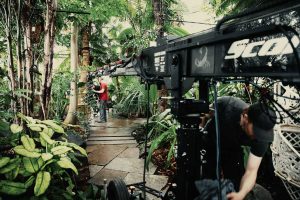Can-do Colombia Impresses Filmmakers
Streamers navigating a post peak TV industry are challenging film and TV producers to do more with less. The industry buzzword is innovation. Results-driven filmmakers are looking abroad for solutions.
And with much production pushed to the latter half of this year, they’re anticipating overwhelming demand for services at film hubs worldwide.
This industry ground truth compelled forward-looking producers and executives from the US and UK to travel beyond their comfort zone to Colombia on a PSN FAM trip in search of a reliable alternative film hub.
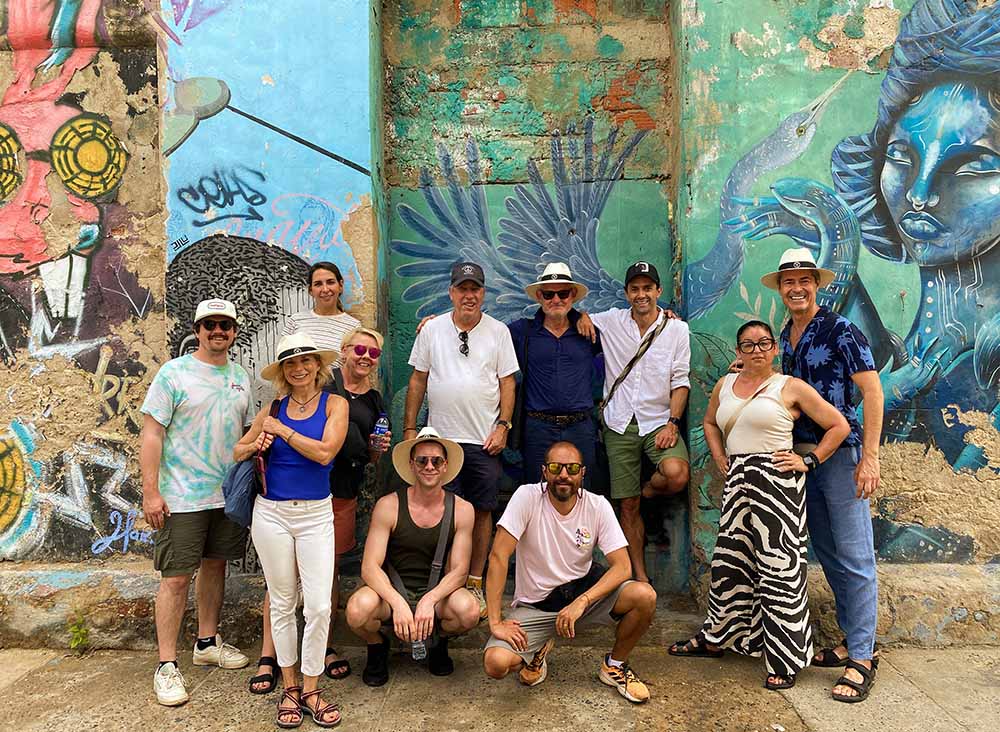
The benefits of filming in Colombia are well known to producers of recent foreign features including Sound of Freedom and the latest in the Paddington Bear franchise. TV series The Big Cigar produced by Warner Bros. and Annapurna Television’s The Changeling also filmed in the country. Still, Colombia remains off the radar for many filmmakers.
Following their visit, the feedback from our producer guests – including executives working with AppleTV+, Artists Equity, Skydance, and Sony Pictures Television, and accomplished independent producers – is an eye-opener.
(The bold in the quotes below is mine).
Carolina Christ: “Colombia offers stability. It has an amazing incentive that can help a lot. Nowadays, we have so much content, and everybody wants to produce for less. I think the way to do so and continue to keep the quality that we’re looking for is coming to places like this.”
Ben Rimmer: “A Caribbean coastline on the mainland is quite a find. And Bogota, the way they looked after us, you know it’s like any other European city to me. It feels perfectly safe in a very first world in a way.”
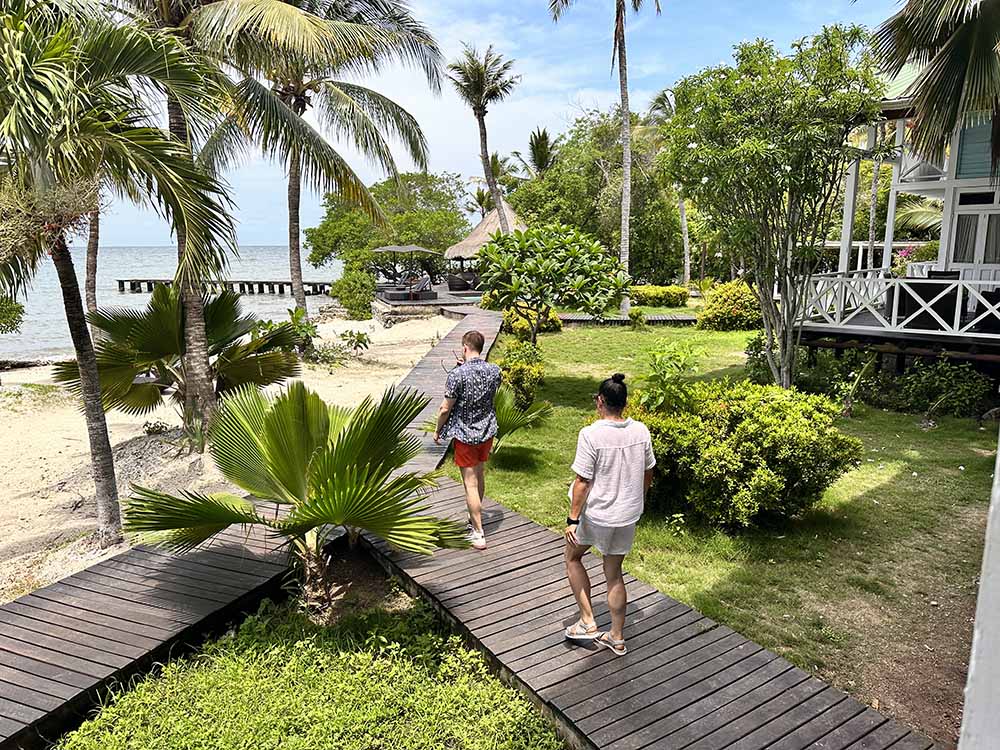
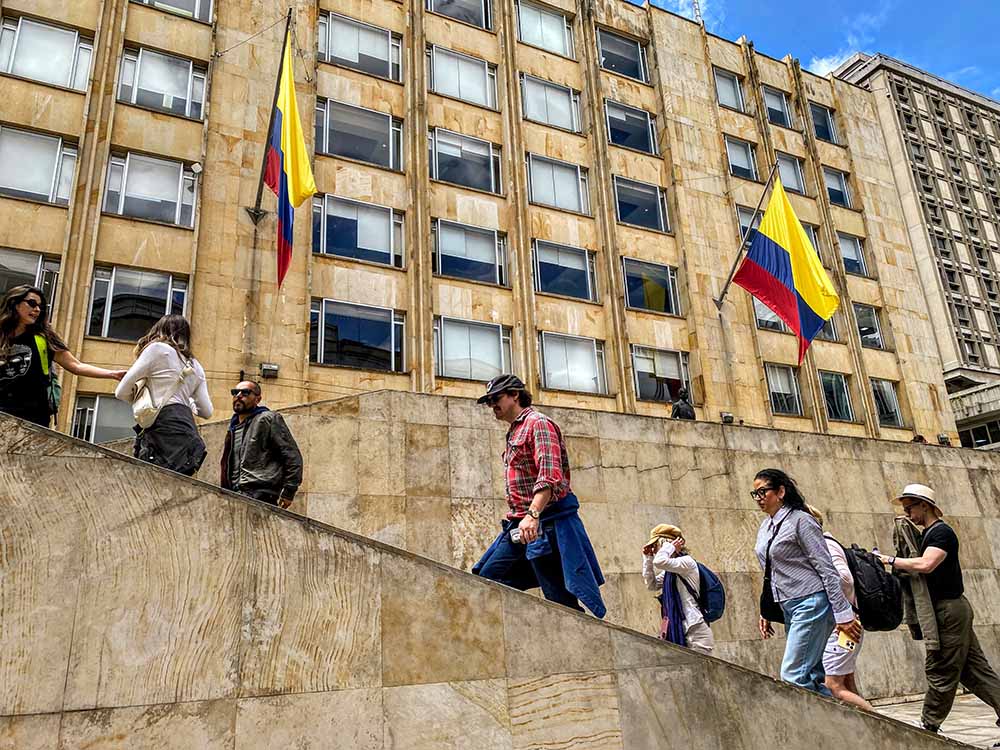
Adrienne Jones: “Locations are all about where you can double other locations. It was very surprising to me to see that you can potentially double New Orleans in Cartagena. You can also turn the camera and get a Miami cityscape.“
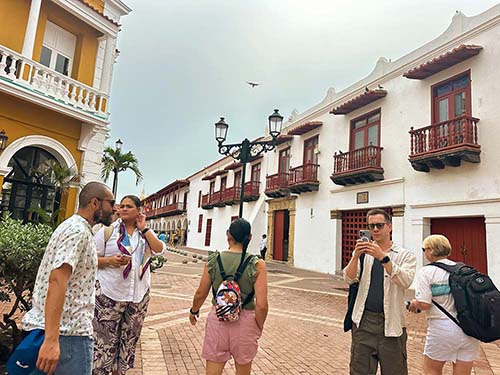
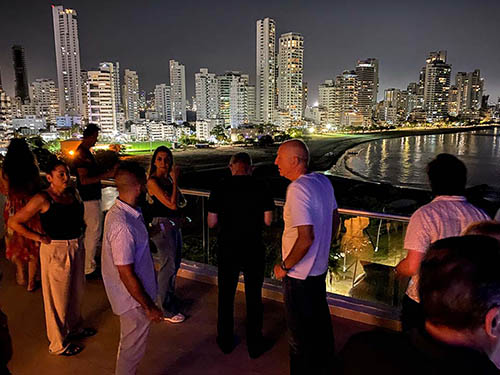
Jackson Reynolds: “One of our senior production executives is specifically looking at Colombia to double for Mexico, and that’s due to the cost savings, the tax credit plus the exchange rate.”
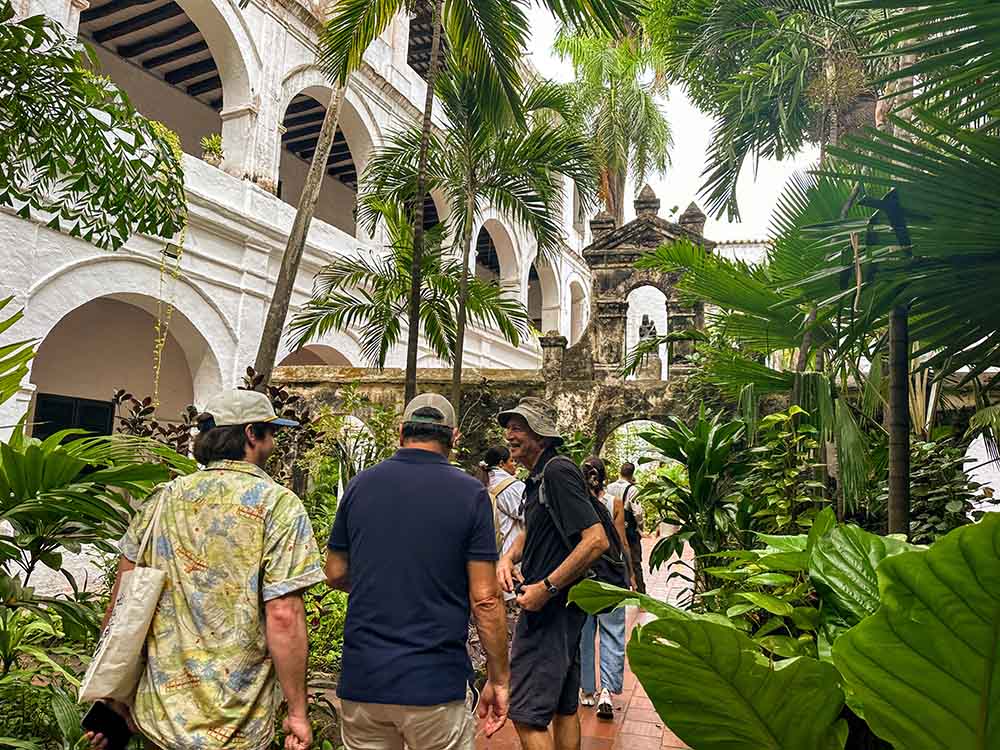
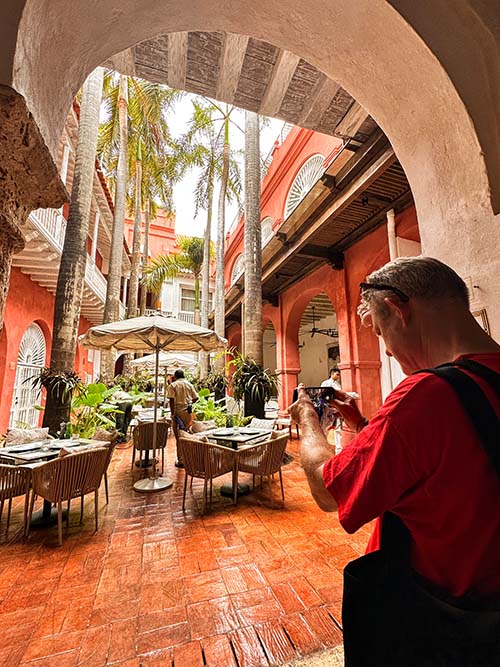
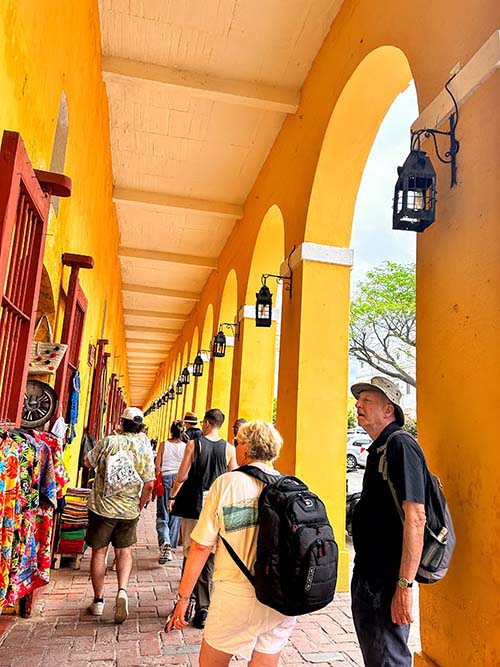
David Friendly: “What really caught me by surprise was the level of technology. That volume stage was state of the art. There was stuff in there I had never seen before. That’s always exciting. It tells you that the country is right with it. And they’re paying attention to these things. That says a lot about the attitude of the production companies here and the teams. That was very reassuring.”
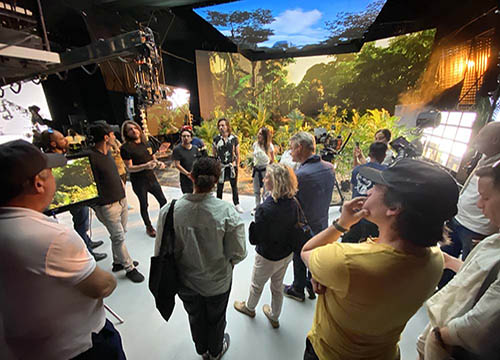
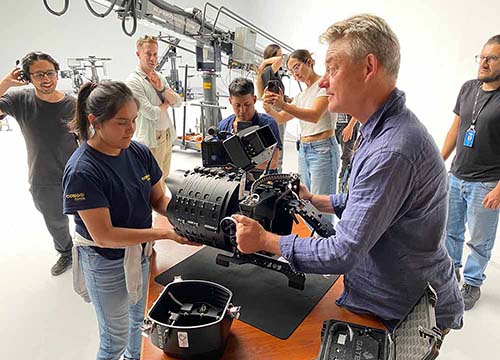
Hend Baghdady: “I thought one of the studios we saw was very high-end and well done. I loved it. So that gives you a certain confidence because it’s rare.”
Michael Robins: Everywhere we’ve been and everyone we’ve met have just been great. And I think that what I’ve seen professionally has been brilliant. There’s a very can-do attitude. And we’ve been very well looked after. They have been on top of everything.“
Gage Hanlon: “I’m glad to find that PSN, in particular, hones in on who you believe is the trusted partner, and you obviously picked a really good one. So, meeting the locals, meeting these guys, really being able to ask them anything was huge and was not expected. To be able to go home and say, ‘Well, when I was there, and we had this discussion about that’ is invaluable.”
Joining the PSN Colombia team to help ensure a memorable visit was Colombia’s film office Proimágenes, United Airlines, and premium Hilton properties in Cartagena, downtown Bogotá, and Bogotá Corferias.
Industry media coverage including more producer impressions following the visit can be read by clicking at The Production Guild of Great Britain, The Location Guide, and also in Spanish at Produ. More to come.
COLOMBIA FILMING LOCATIONS
The PSN Filmmaker FAM trip to Colombia showcased an eclectic selection of filming locations in Bogotá and Cartagena that visiting producers and executives found inspiring.
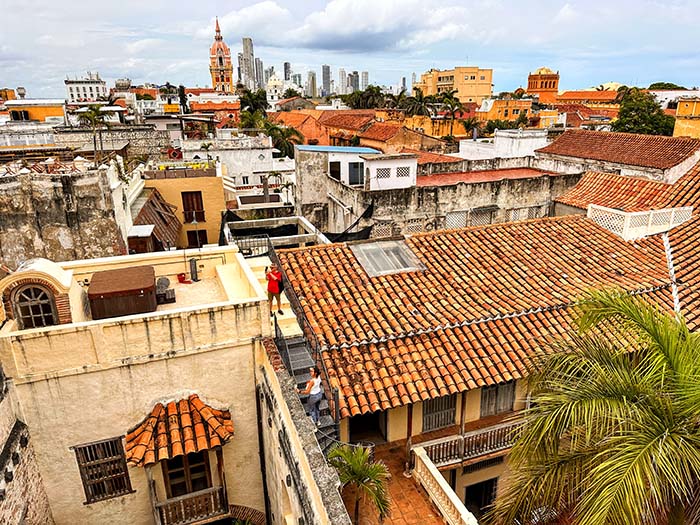
“There’s an extraordinary range of looks,” said David Friendly, producer of Queen of the South. “Cartagena was very different than I envisioned it because I read about the cobblestone square and, you know, this kind of Little Havana vibe to it, which it has, and then, all of a sudden, there’s this kind of cityscape that makes you feel like you’re in Miami. That can be very advantageous. if you were trying to do a show about a hotel in Miami, you could do it here. Save a lot of money.”
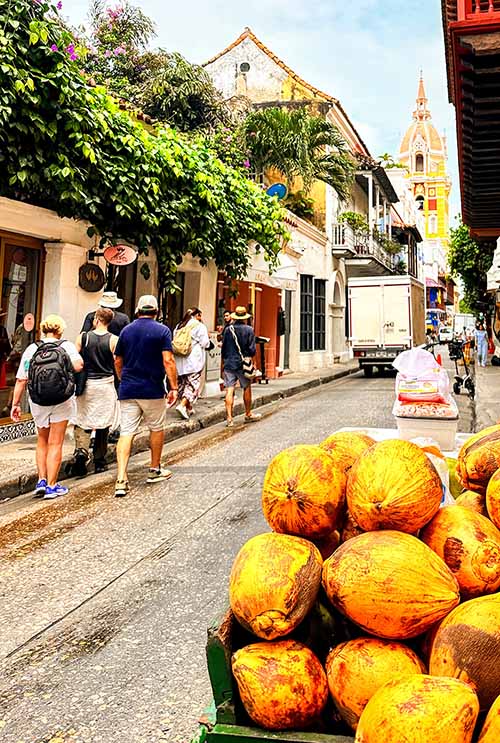
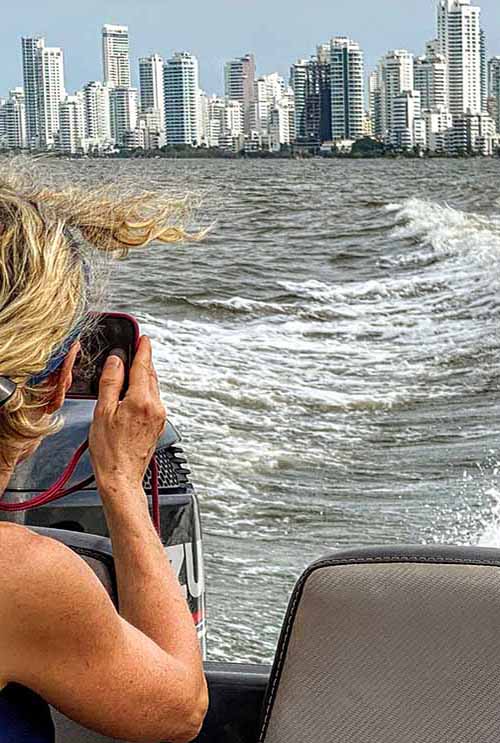
“Why would you go to a Caribbean Island? Jamaica, right? All the Brits go to Jamaica” said Ben Rimmer, producer with recent credits for Bron Studios, Warner Bros., Entertainment One, Amazon Studios, and Film Nation Entertainment. “Colombia is everything you want without all that danger. You’re not going to get raided here by pirates. I don’t see the point of filming the Caribbean anywhere else but Colombia for the kinds of locations I’d be looking for. Houses, beaches with palm trees, clear blue water.”
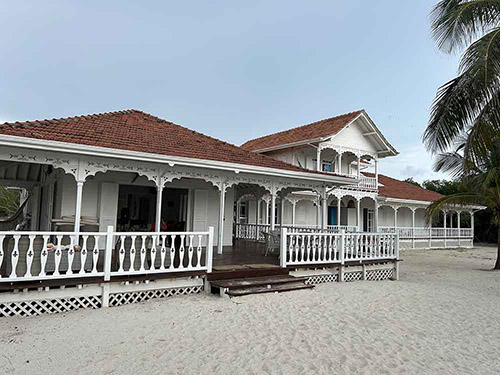
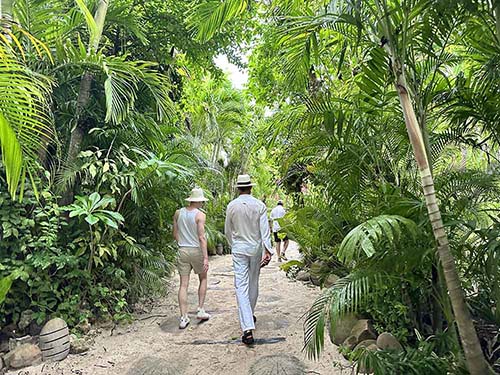
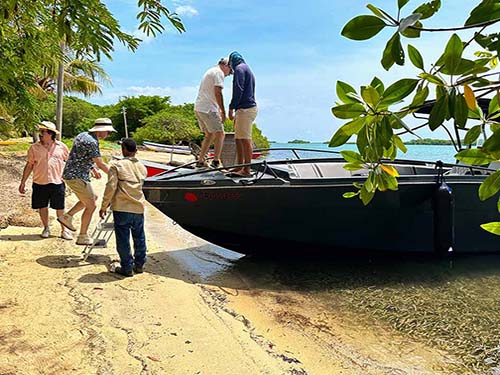
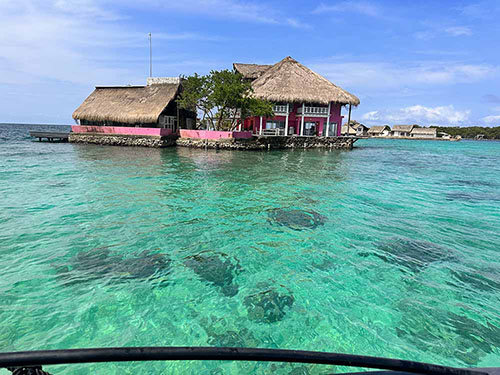
“There’s this whole tropical vibe on the Rosario Islands that we visited and that is just gorgeous,” added Friendly. “It could be anything from Jamaica to Hawaii. Pick your tropical environment, and it’s beautiful.”
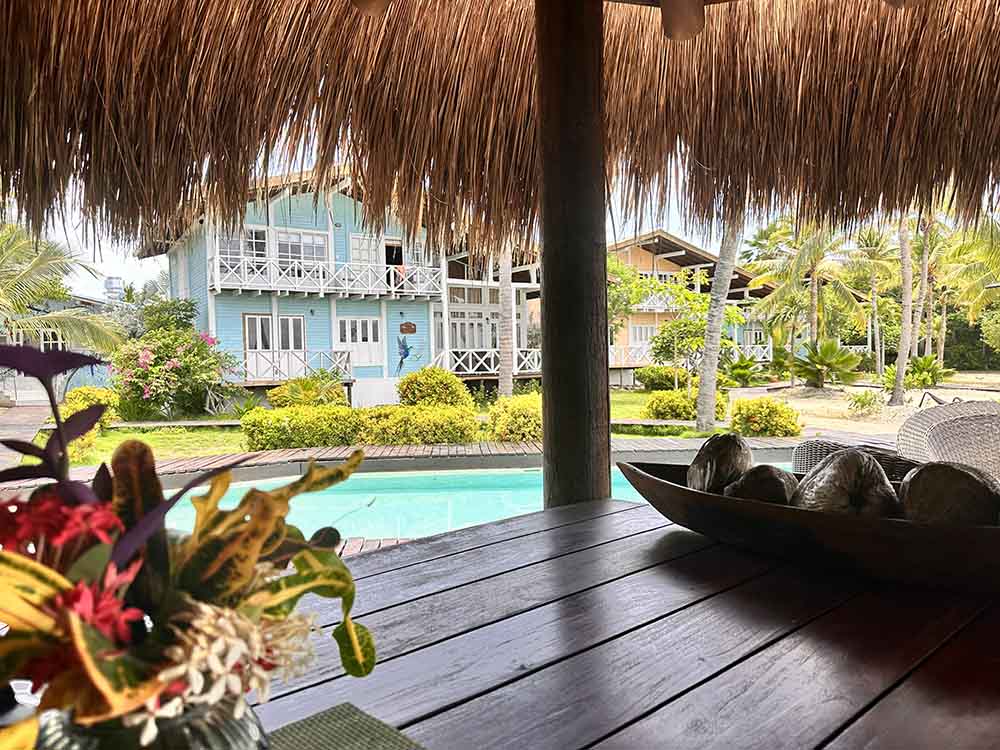
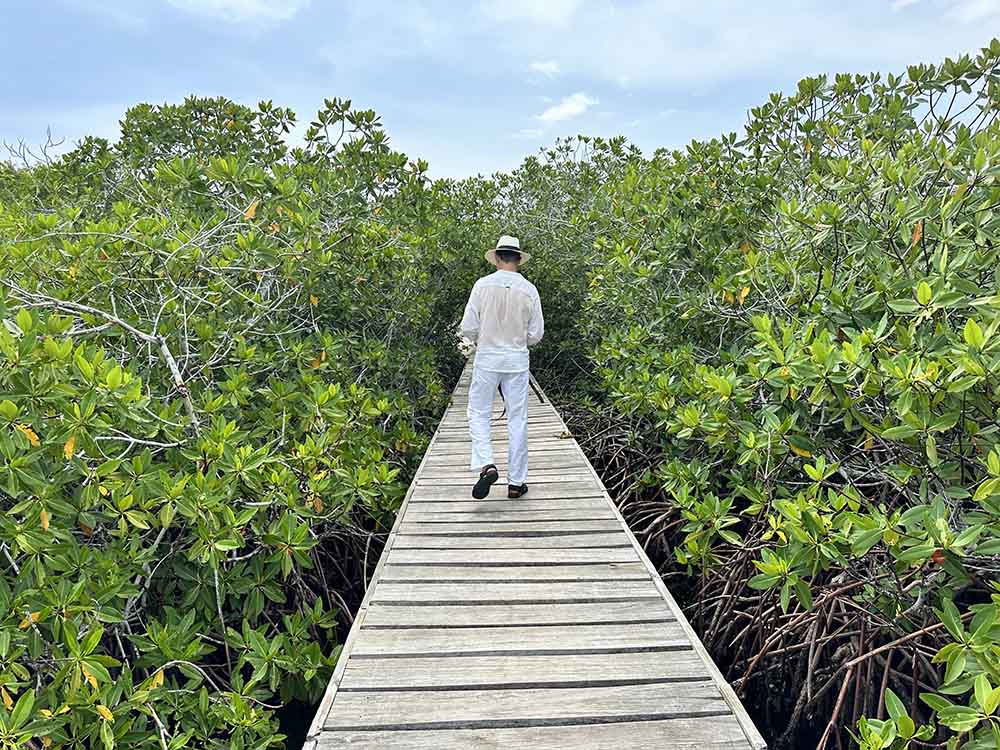
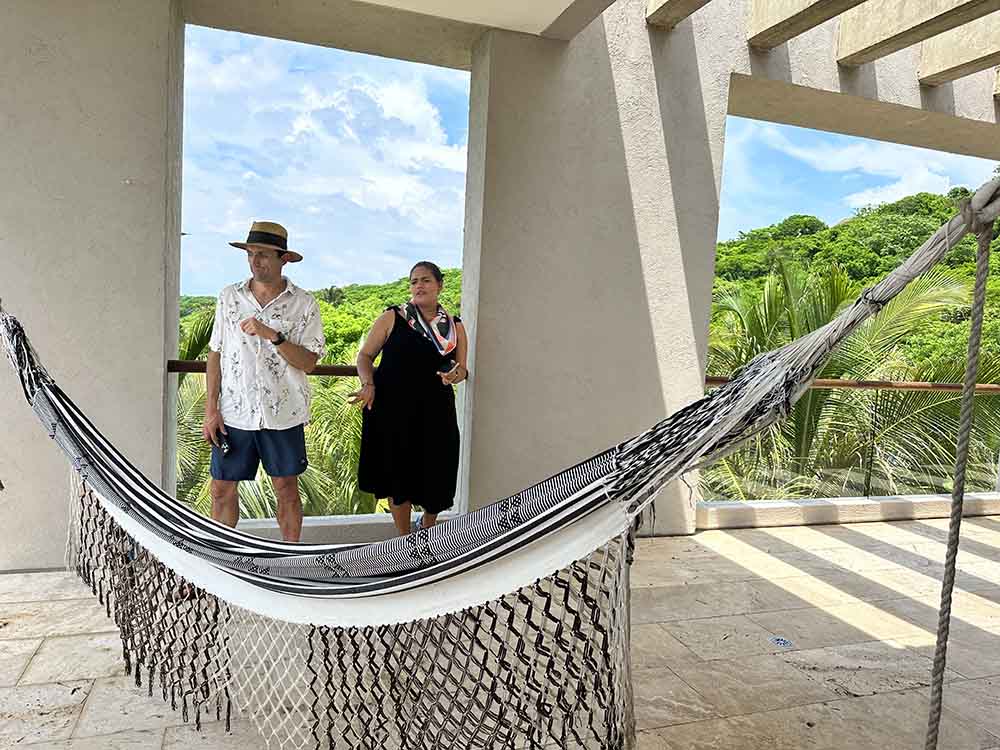
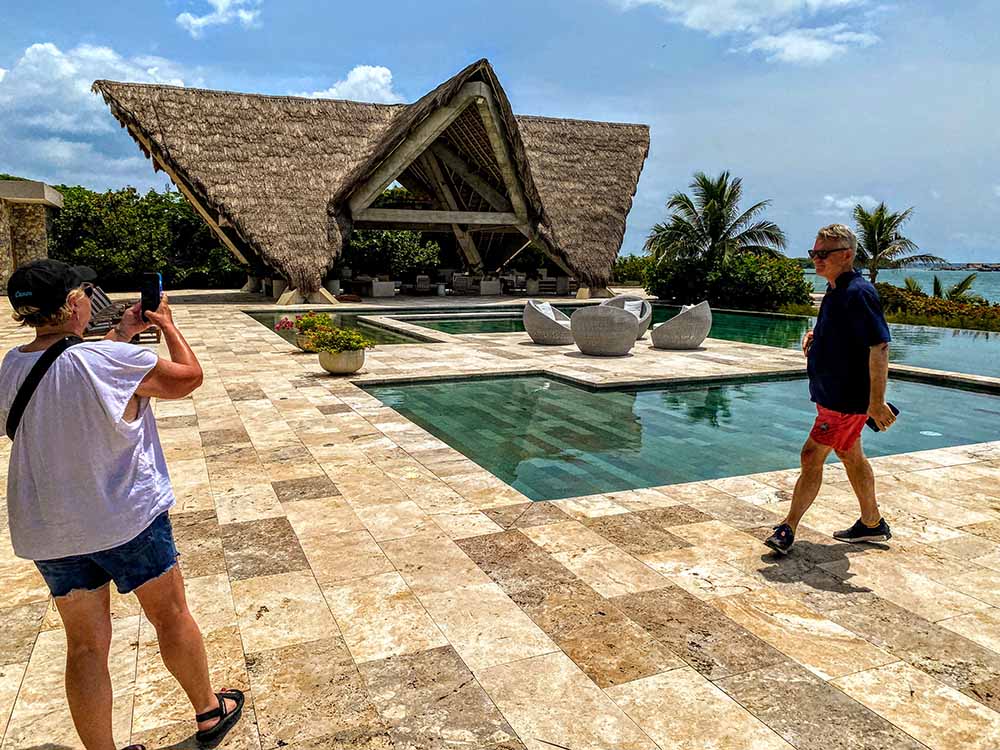
“On our first day in Bogotá in the square they could double as New York, we saw that big empty building, the Gobernación de Cundinamarca,” recalled Jackson Reynolds, Director of Television Production at Sony. “It was so cool because it was massive, it was completely available.”
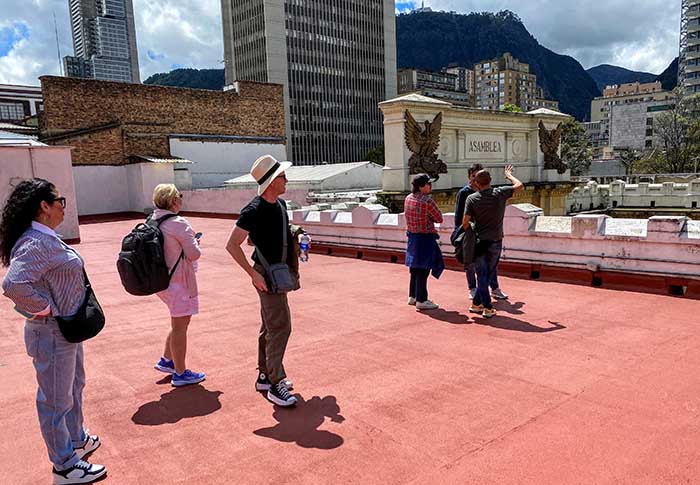
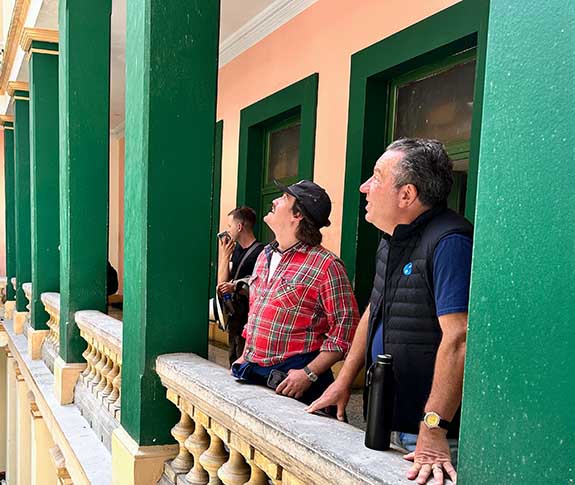
“I texted a friend that is producing scary movies to say, ‘I found your location’ because it’s pretty amazing,” added AppleTV+ LATAM Production Executive, Carolina Christ. “A location like that is fantastic because you could just concentrate it there, the base camp, the catering, the makeup and wardrobe. You can do trailers or little rooms where people can be comfortable. You can do so much.”
“What was surprising is the filming access that Bogota will give you” said Skydance VP of Production, Adrienne Jones. “We were able to go into the Presidential Guard Battalion. Few countries would let you shoot that as in Bogotá.”
“It’s so diverse here. When we were by the racetrack off that interstate, an hour and a half drive out, it’s completely different than the city of 11 million people that is Bogotá,” noted Artists Equity Manager of Physical Production, Gage Hanlon. “Other than the signage, it sort of felt like we were in Appalachia with some of the rolling hills, which was a very interesting feeling. That certainly exceeded any expectations.”
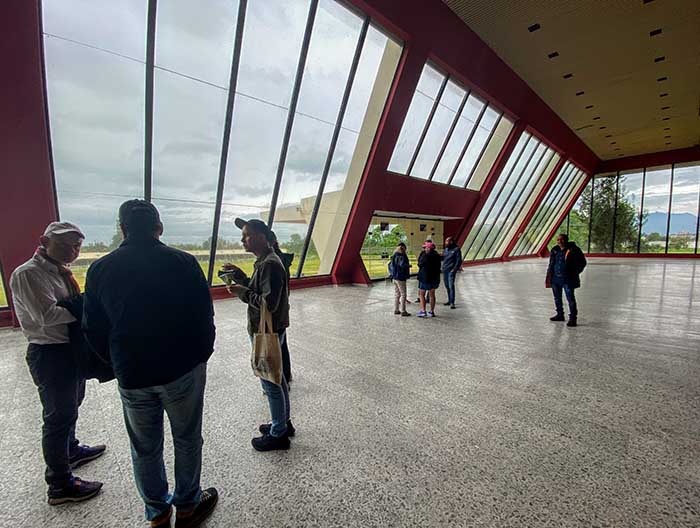
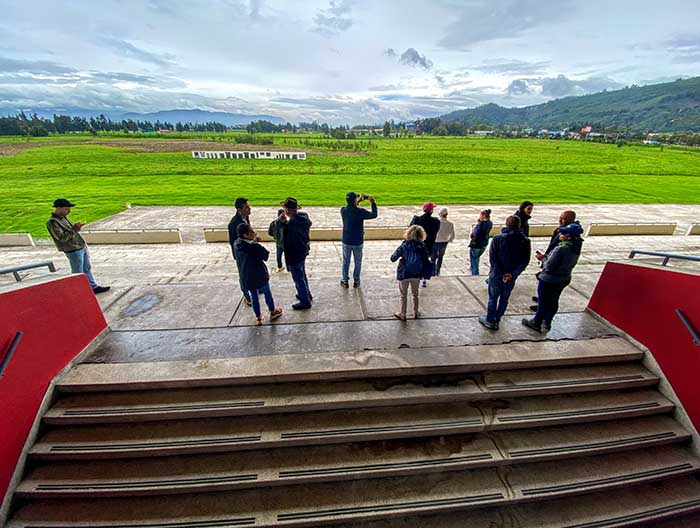
“The lake was magnificent with the straw and just that smoke gently coming off. You could be in the middle of a Congo or something quite jungle-like although we weren’t near the jungle,” said Rimmer, formerly a location manager for titles including Sex and the City 2, Syriana, Batman Begins, and Spy Game. “And that salt mine cathedral was extraordinary for the right project. I’ve never seen that before. You don’t want your show to look like everyone else’s, and I think Colombia is relatively untouched for UK and European television.”
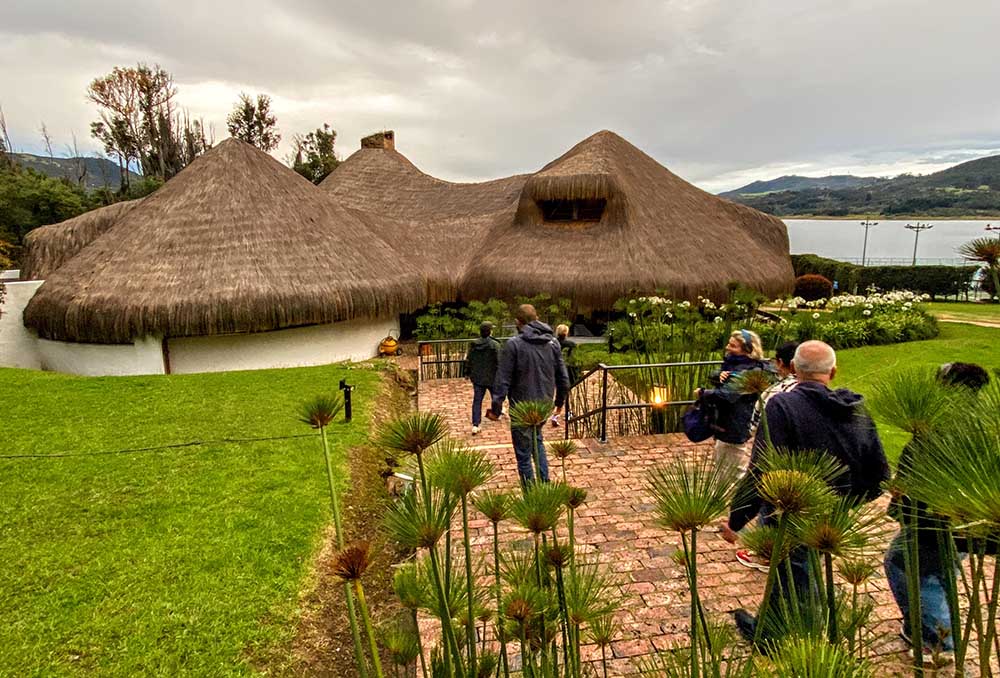
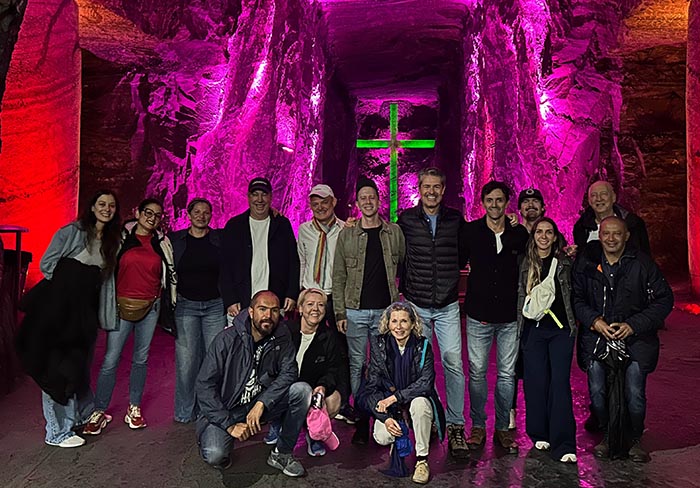
“The iron factory was so The Walking Dead,” said independent producer Hend Baghdady, a former SVP at Fox.
“Some of it was beautifully chewed, like where it’s been smelted along the hallway,” added Reynolds. “I was delighted by that experience, and I wouldn’t have expected to see something like that.”
“Even if you just shot it as plates to use, there’s a lot of richness in architecture here,” concluded Baghdady.
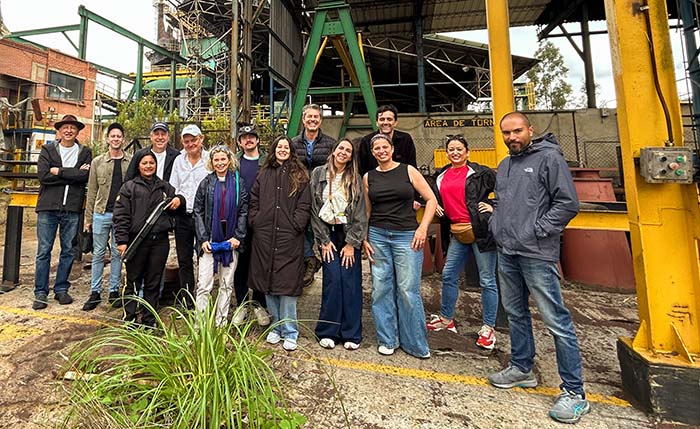
“When we went into the private estates and saw those extraordinary houses, whether you use them for a location or, you know, you put Ben Affleck in there or whoever. It just feels a lot more first world than I was expecting,” noted Rimmer. “And the Hilton chain, I’ve been really impressed by them. You know they’d be very flexible with the particulars of film crews, all our mad requests. And needing to sleep between eight in the morning and six at night, you know.”
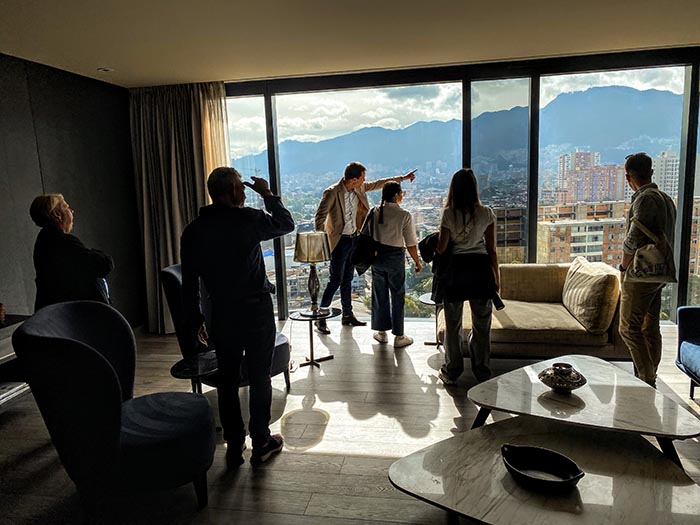
“I think that downtown Bogota, as well as the streets and alleyways we saw up on the hill, are all interesting,” said Michael Robins, producer for multiple projects at BBC Studios and ITV Studios. “The urban landscape shows quite a lot of wealth and poverty as well, so you could do either.”
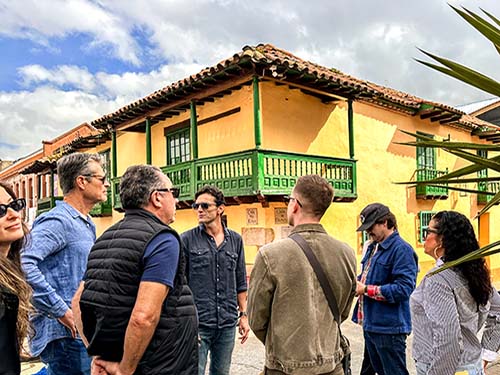
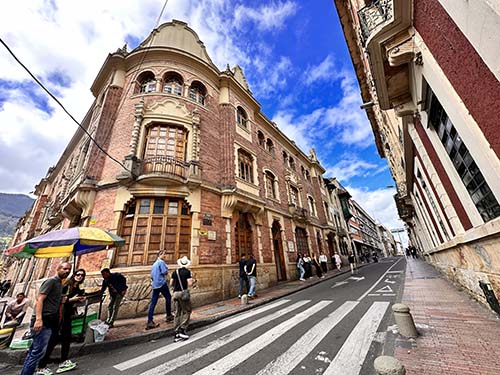
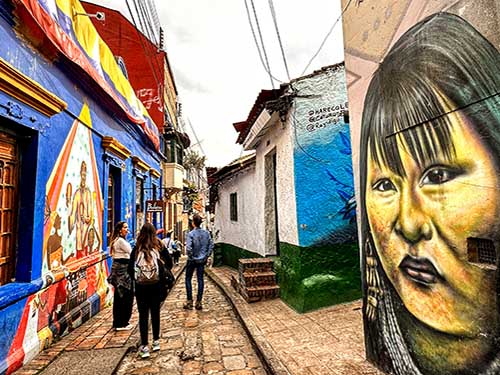
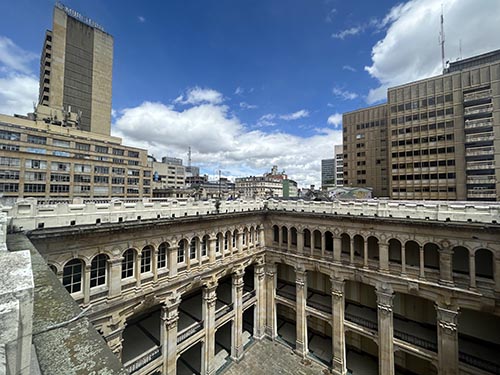
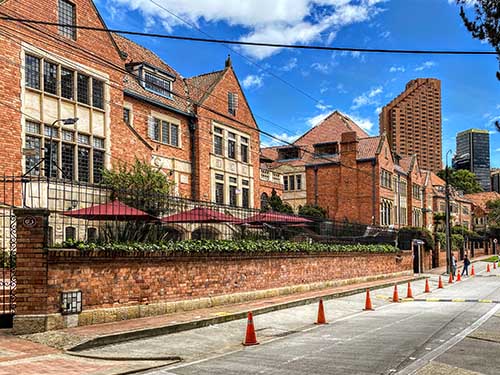
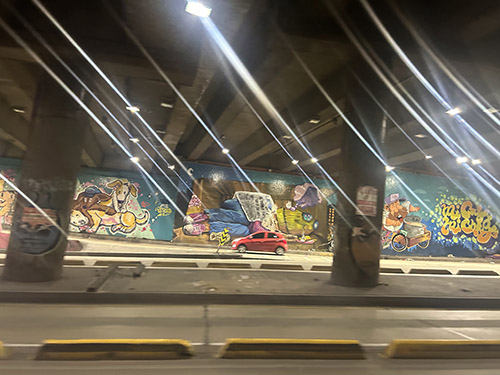
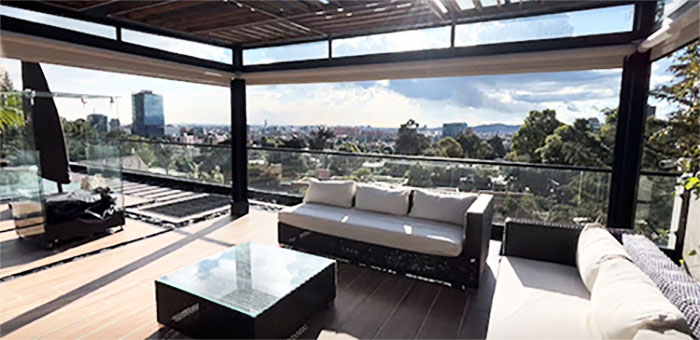
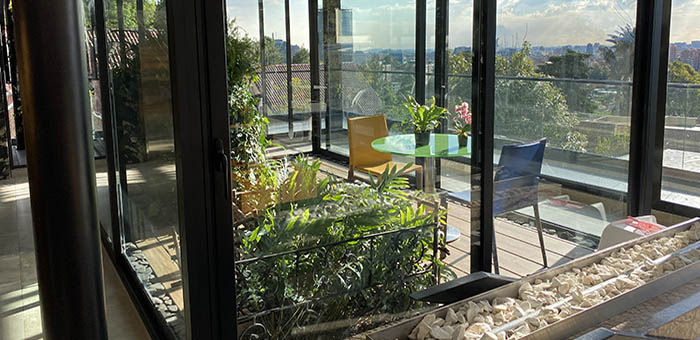
“One of the coolest moments was being up in the hills with the painted houses,” reflected Hanlon. “You immediately think favela. I asked your team’s location manager what you would have to do to shut down this road and be able to have Humvees come down and take some things out and, you know, big action, second unit questions. He can make it happen.”
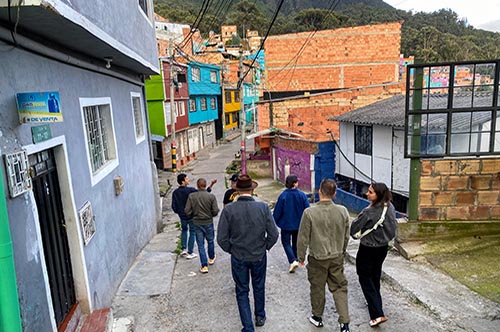
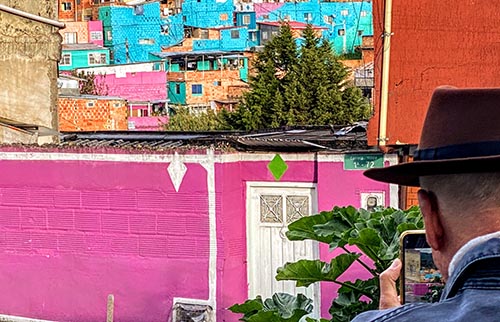
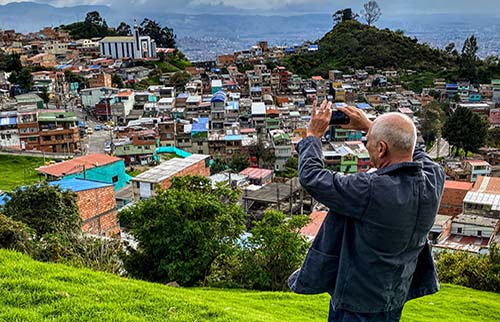
“Being ready with the correct information will be key,” advised Reynolds. “Every question must be answered in a way that the studio and the partners are going to respond enthusiastically to, or comfortably to. It’s like an animal, if the studio gets spooked at all, the whole thing is scrapped.”
“You know, to be told, ‘that’s no problem.’ constantly throughout this trip was pretty great,” said the Artists & Equity Physical Production Manager, whose credits include Air and The Last Duel. “Nothing was out of reach with these guys.”
“We can tell great stories but think about how we can produce it effectively. You need the desert? Well, Colombia has deserts. Oh, you need the jungle. Got that too. You need a house that looks over a lake? Well, we went to one just now,” insisted Christ, whose experience includes more than a decade overseeing production of Spanish-language content at NBCUniversal Telemundo. “You don’t have to leave the country, and you don’t have to leave the incentive to be able to get what you want.”
“Even if it takes a while to physically get out here, there’s definite cost savings. The locations we’ve looked at, like that large home by the sea for $200 a night. Insane!” exclaimed the Sony Television executive. “So, there are other places you can claw back from and make it up and make it a boon for production. I’d be very confident that we could bring a variety shows based in different locations and pull it off.”
“With Cartagena, it’s the natural light that you’re getting that you’re not going to get anywhere else. So, it’s a very unique practical look that you’re getting with the camera lens,” observed the Skydance VP. “I see Cartagena as a brilliant distant shooting location. Coming out with a small crew, shooting plates, maybe a small 2U scene, and establishers.”
For projects the producers and executives who joined this PSN Filmmaker FAM trip already have in development, Colombia seemed a good fit.
“While I was here, we were talking about a show that is taking place in and around Mexico City, and we could double that here. And certainly, save a great deal of money,” reflected Friendly, an Academy Award-nominated producer for Best Picture nominee Little Miss Sunshine. “That was exciting for me. Coming all the way here and realizing, wait a minute, we can do this show in Colombia, it’s a fantastic feeling.”
“There’s a show that I’m pitching that has a travel kind of element to it,” shared Baghdady. “There’s such a wide range here that you could double Prague, you could double the US, you could do a beach scene. So, I have been thinking about that as we’ve been walking around. No promises. But believe me, that would be like off the charts.”
“Colombia is a very real contender for stories,” remarked Rimmer. “I have a project in early development that involves a Caribbean Island. I didn’t appreciate the Caribbean side of Colombia before this visit.”
CREW POOL IN COLOMBIA FILM HUB
Producers and executives also gained a better understanding of the local crew base prepared to work on their projects.
“Colombia has a large base of crew that have expertise in commercials and local productions, and so that’s a hard sell to a Network who is looking for an elevated finished product. That’s why so many productions go to Canada and Budapest,” suggested Jones. “It’s tough because you need a deep pool of extremely seasoned crews with big credits to their name.”
“When it comes to American productions and American directors and showrunners, I know them. They have their biases. They have their standards. But you can win them over,” countered Christ, a native of Venezuela based in Miami as Apple’s LATAM Production Executive. “Innovation must come with the flexibility. The flexibility of traveling somewhere else. The flexibility of hiring more below the line locally. I want them to think that it’s a possibility to come here. Not only because you can get an amazing location for a cheap price, but also because you can get people who know how to do the job. I feel like it’s also my responsibility to breakdown the bias and demonstrate what can be done. Let me show you the work of a production designer that’s local. Let me show you an art director who did this. I need to open their minds to the possibilities.”
“You crew it up here, having workable options with a good crew. You don’t have to bring over all of your army,” insisted Rimmer. “You’d say to a dozen people from the UK, Europe, or whatever, you know, come. It’s going to be a Colombian crew. My experience of this was in Spain, where we had a huge crew on Emerald City for Universal. And we all became one large family, you know.”
“There are very talented people here, but the main concern would be do they truly have the numbers of talented crew,” questioned Reynolds. “Would we lose them to other big productions in the area?”
“My sense here is that there’s a passion for film,” offered Friendly. “I’m not sure it’s the deepest crew base, but why would it be? They need to have more things shot here and then more people come here and work in those jobs. I think it’s kind of like a cool place to get in on the ground floor. You kind of feel it. That it’s going to grow rapidly. “
COLOMBIAN FILM PRODUCTION INFRASTRUCTURE
“You always need some small sets, you know, whether you’re building them in a garage or whatever,” acknowledged Robins. “And you could certainly do that here without blinking.”
“We saw everything from, you know, 33-35-foot-high stages, which is what we would be accustomed to, all the way down to smaller white cycs,” noted Hanlon. “I was not expecting that. There’s a little bit of something for everybody.”
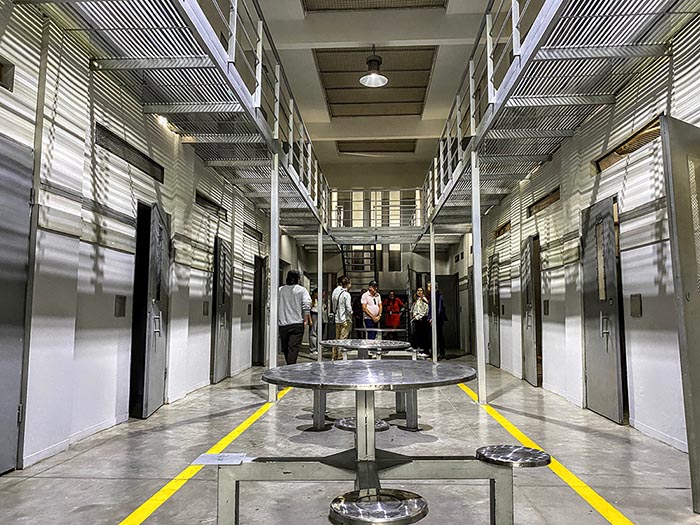
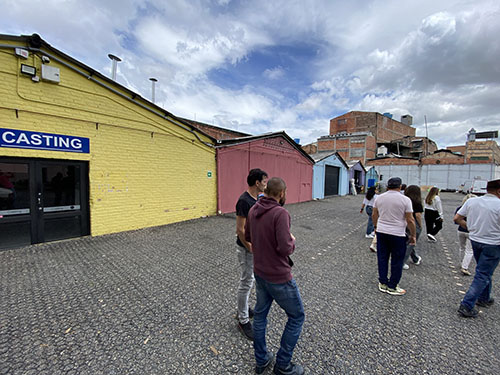
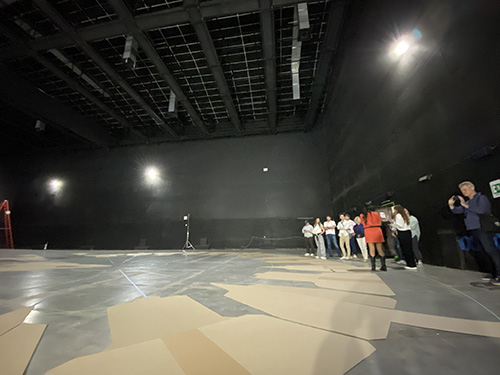
“I think it would be a little challenging if you were to base a television show here, the infrastructure for what’s required for your entire crew and your cast and everything else that kind of goes into what we do to bring the creative to life,” explained Jones. “Specifically, for Skydance, we shoot large scope and scale.”
“Some of the studios were great, beautiful facilities, but, frankly, the stage spaces aren’t large enough or aren’t as large as we’re used to, and not enough of them, low ceiling height,” observed Reynolds. “The potential is here. I understand there are warehouses and teams on the ground who are skilled at converting those facilities. You know, bring in air conditioning, soundproofing, set up a red-light system. We do it everywhere else. So why can’t we do it in Colombia?”
“Once they grow that talent base here, then it may be worth investing in the development of large-scale sound stages, back lots, and tanks,” concluded Jones.
TOOLS OF THE COLOMBIAN FILM INDUSTRY
“We’ve seen they’ve got the absolute latest in equipment, and they’re totally on top of that, which is mightily impressive,” affirmed Rimmer. “It’s world-class!”
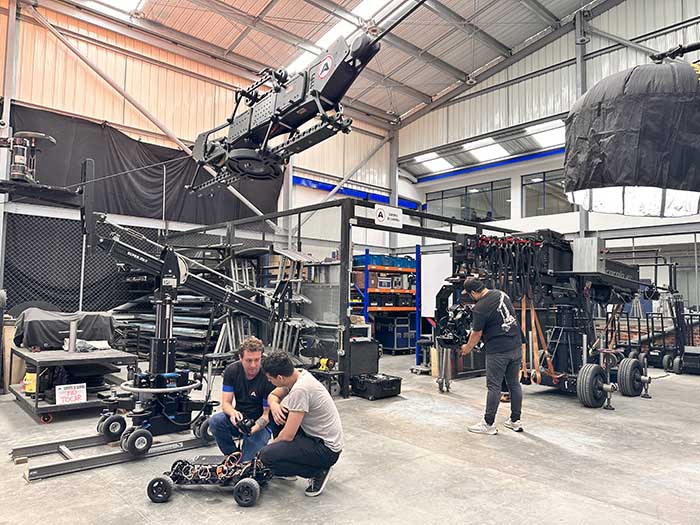
“I asked one of the managers a question about a certain size Technocrane. And he goes, ‘we don’t have it, but we can get it and we can pass it through and it’s good spend’,” noted Hanlon. “That was great, to hear they are aware of what it means to have a tax incentive. It’s things like that make you feel they’re not rookies at this. They know the game. That’s why people go outside of Los Angeles to shoot their projects.”
“I actually have worked in animation with a lot of Colombian studios, and so I always had like a pretty positive outlook on it,” revealed Baghdady. “But I was surprised by how elevated the production resources were. They felt more advanced, and also, because the Colombian culture is so welcoming, it feels in a certain way like they would bend over backwards more than certain locations in the US.”
LOGISTICS OF COLOMBIA FILMING LOCATIONS
The personal touch our airline sponsor delivered for travel to and from Colombia earned widespread appreciation from our FAM trip guests.
“I want to use United (Airlines) because of the way Lisa has looked after us,” Rimmer said echoing a commonly held sentiment. “Just taking care of everything. Every flight can be delayed and have problems. but the fact that she’s there, and you’ve got a point person who’s so capable and has a team back home. She’d be like, ‘Hey, why didn’t this happen?’ That’s good because normally we’ve got a travel company or coordinator. They’re not part of the airline. That’s slightly beyond their control. To have someone on the inside that’s quite different. That’s why we’re really delighted to have met her.”
Transportation in Colombia requires careful planning with boots on the ground.
“I have a project for Bogota and Cartagena. And it’s a project that we’ve been working on for two years. We’ve been building a budget for it, but it has some logistical issues,” shared Christ. “We’re thinking about how we can maximize our time if we have to travel from Bogotá and Cartagena. Is Cartagena more expensive than Santa Marta? Can Cartagena be Cuba in the 1950s? So, this trip was a great opportunity because it was very specific for that need.”
“I think Bogota is really challenging to move around in,” noted Jones. “You would need to limit your shooting to one location in the day, unless you cleverly set it up with two separate main units and shuttle your director back and forth. You can make anything work.”
LASTING IMPRESSIONS ON FILMING IN COLOMBIA
“This trip was great for me because it gave me additional information, additional tools that I can go back and say ´hey guys look at Cartagena. Look at all you can do,” said Christ. “In Bogotá you must be conscious about the traffic. For our studio operations, if we go there, these are the limitations when it comes to stage sizes. Maybe we should go and do more practical sets.”
“I feel like the interactions with the film commissions are important, because you want to see these people face to face and hold them to their word,” remarked Friendly. “I think there’s some scepticism about, you know, hearing about this specific place that has an incentive of X percent and wanting to know that that’s real.”
“The biggest thing is always actually meeting people face-to-face,” concluded Robins. “You look into the whites of their eyes, and then you know you can tell. It gives you great comfort to know that you’ve met people, you see how they work, it’s not just bullshit.”
“There’s a trust that, you know, starts to build,” said Hanlon. “This idea that you’re going to be in good hands when you come here. A built-in trust of not only the production service company that you’ve put us in contact with, but developing a relationship with even people at the film commission builds a sense of security which is important when going abroad to shoot your project.”
“It’s about trust in the people. Can we trust them with a budget? Are they people who can report like we like to?” posits Christ. “I feel that when my work mates think about Colombia, they think maybe not. But look at your team, they speak English, they’re honest people. You know, you build that trust.”
“I think that’s one of the real advantages of a FAM tour, that you’re going to spend enough time there, and you’re going to hear enough about what’s real, what’s hoped for, what’s possible, and what’s not possible,” said Friendly. “I like spending enough time here, it allows your imagination to think about all the creative possibilities along with the physical production. It’s always fun when you’re in the van and you’re driving around and you go, oh, wow, I could do this show that I’m working on. This could work here. I feel confident in going back. If I was pitching, telling a studio about, you know, I was recently in Colombia, I can tell you that I saw it with my own eyes. And you can’t get that from a brochure.”
“I’m leaving with a higher sense of where that’s great,” said Baghdady. “I’m like 100,000% happy I came and like wouldn’t trade it.”
“The FAM trip itself has not only been a great resource to learn about all things Colombian, to see it first hand, to be able to really let everybody back home know what the country has to offer and the diversity of what the country can give us for a future project, but also meeting people from all around, from Miami to London, who have worked in all different areas, and to share ideas, share their experiences,” concludes Hanlon. “The Production Service Network has put us in our own sort of network, and we get to talking about not only all things Colombia, but several other countries that are offering different and amazing things.”
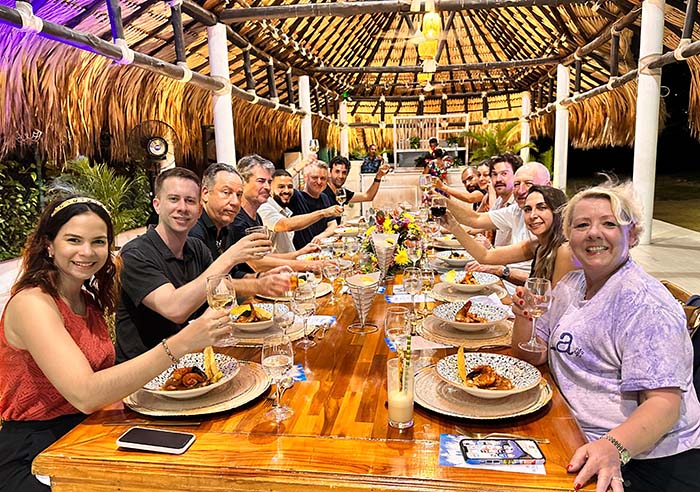
“It’s been go, go, go. But we’ve still managed to have a lot of fun,” said Reynolds. “We’re all like-minded people. I think it’s been amazing. I feel like it’s been a cohesive group. Great stories, great experiences, smart, independent, intelligent people. For me, it’s been inspiring. An experience of a lifetime.”
“It was a very thorough, complete experience, and I came away tucking in the back of my mind, I want to find a show for Colombia. It wasn’t like, can we shoot there?” said Friendly.
“You also have a good networking opportunity, and I’ve met some great people,” continued Friendly. “There are people on this tour that I will definitely stay in touch with, and that’s also a hugely valuable part of it for us. I was able to discuss a project with an executive, and it was right up in her area of expertise. We got her the script and the deck, and business is being done in the van. That’s great!”
“If you say Colombia, and someone else who doesn’t know about it goes, ‘Colombia, are you kidding?’ Having been here, you can just dispel all the ignorance about the situation that is probably likely to come up from people,” affirmed Rimmer. “The Colombians do have in their essence something very special. Every nation is unique, but you sense a magic about them. There’s a beauty about the people underneath, and that’s been a real delight to me because when you hear the bad stories, you just are under a fearful impression, and it’s not a truthful one. So very good to have got rid of all of that and just be educated more.”
“I’m excited about how I can prepare my report and then share it with the other production executives so they can enrich themselves with what I experienced,” concluded the AppleTV+ executive. “To show them what’s been done here on a backlot for half a million dollars and see their reaction: ‘Oh my God, that’s amazing. That’s crazy.’ That impression makes them push more for Colombia.”
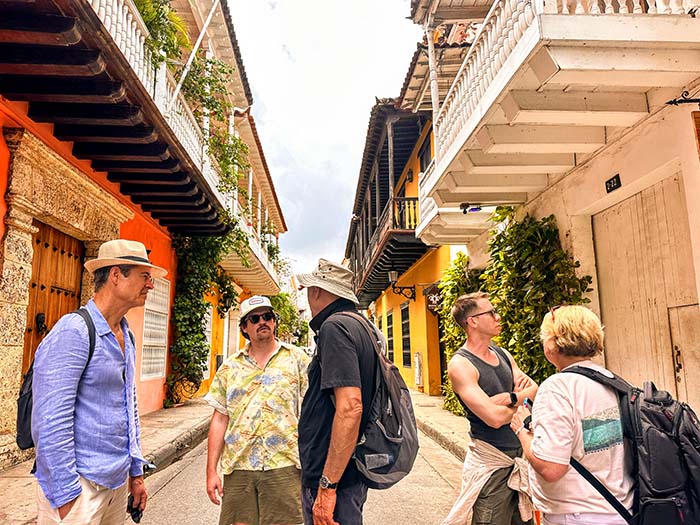
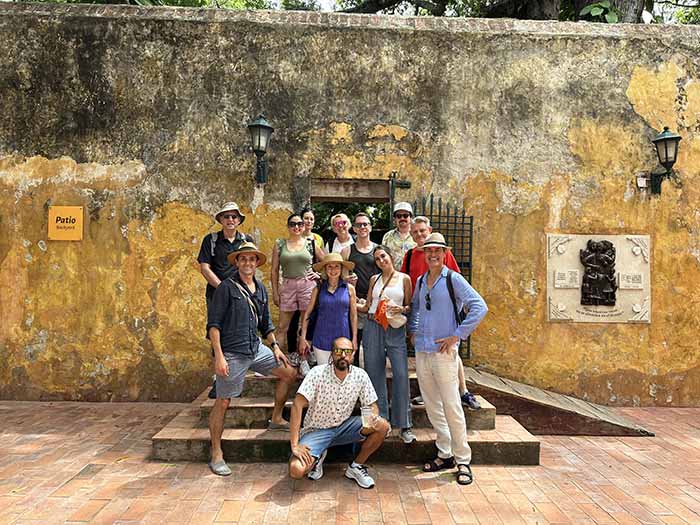
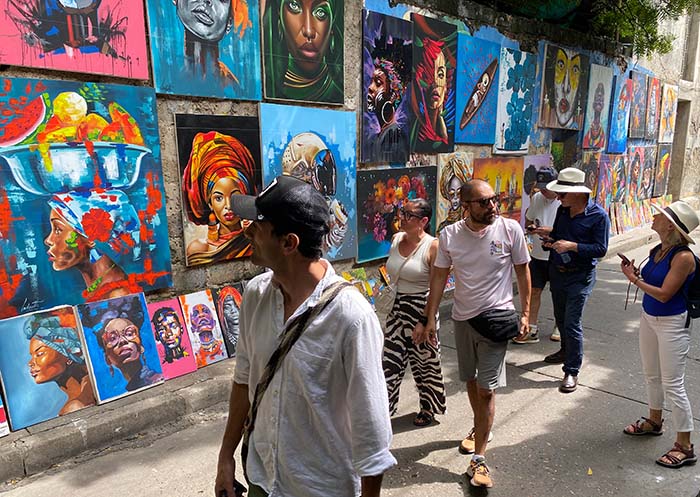
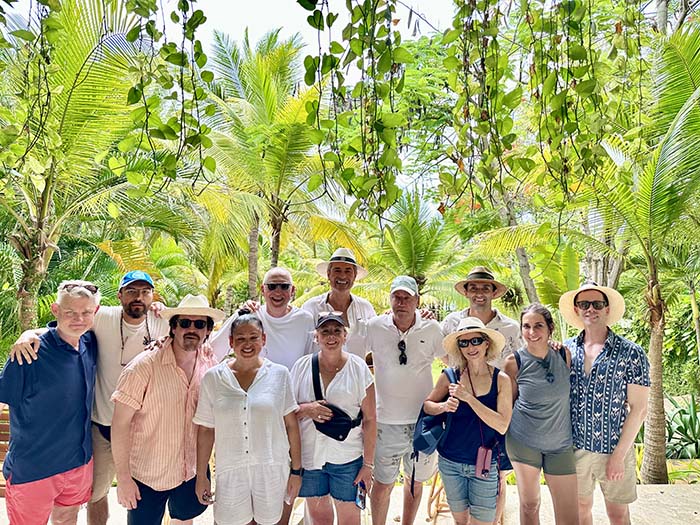
Michael Moffett
Production work on commercial, long form, and factual shoots for clients from around the world during three decades is at the core of Michael’s experience. Highlights from his years managing production service budgets of all sizes for feature film, sport celebrity shoots, primetime TV programming for all major US & UK channels, and events as diverse as motocross and a papal visit.
This Los Angeles native with a traveler’s soul started his own production service company overseas to share with fellow production professionals the wonders of shooting film, photo, and video projects across Spain and Portugal – the sunniest corner of Europe. Michael is as quick with a smile as he is committed to no-nonsense production workflow delivering cost-effective, quality results you can see in frame. He founded the Production Service Network in 2014 to accomplish that worldwide. He manages PSN from his base in Madrid in Spain, Madeira in Portugal, or most anywhere he has an Internet connection.

